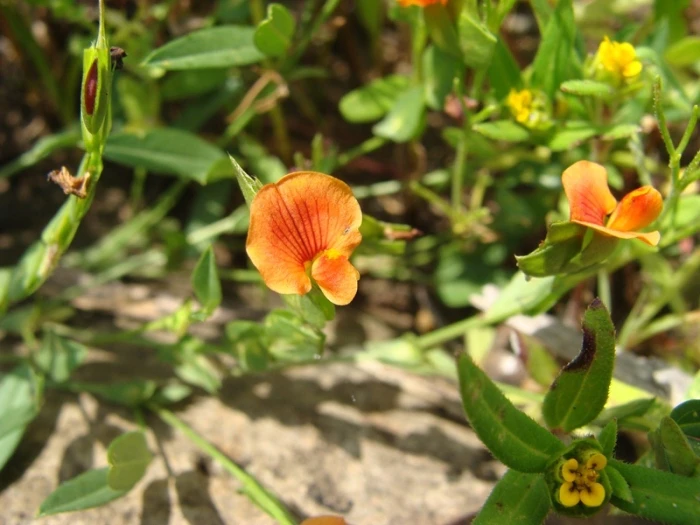Jumby Bean
(Zornia diphylla)
Jumby Bean (Zornia diphylla)
/
/

Alexis López Hernández
CC BY 4.0
Image By:
Alexis López Hernández
Recorded By:
Copyright:
CC BY 4.0
Copyright Notice:
Photo by: Alexis López Hernández | License Type: CC BY 4.0 | License URL: http://creativecommons.org/licenses/by/4.0/ | Rights Holder: Alexis López Hernández | Publisher: iNaturalist | Date Created: 2012-09-06T17:38:17-07:00 |



















Estimated Native Range
Climate Requirements for Brownsburg, Indiana
| This Plant | Your Site | Plant Suitability for Your Location | ||
|---|---|---|---|---|
| • Precipitation | 55" - 66" | 41" | Aquatic | Aquatic |
| • High Temp. | 78°F - 94°F | 85°F | Your summer temperatures are normal for this plant. | Excellent |
| • Low Temp. | 37°F - 71°F | 17°F | Your winter temperatures may be too cold for this plant | Too cold |
This plant should grow well at your location with about N inches per year (Y minutes per month) of irrigation.
Summary
Zornia diphylla, commonly known as Jumby Bean or Two-Leaf Zornia, is a perennial herb native to tropical regions in Asia. It is typically found in open grasslands, savannas, and disturbed areas, often thriving in poor soils. This plant grows at a moderate rate to a height and width of 0.5-1 feet (0.15-0.3 meters). Zornia diphylla is characterized by its compound leaves, which consist of two leaflets, and its bright yellow, pea-like flowers that bloom in the summer and fall, adding a splash of color to the landscape. The flowers are modest in size but can be quite showy when in full bloom.
Jumby Bean is valued for its drought tolerance and is often used in xeriscaping, a landscaping method that reduces or eliminates the need for supplemental water from irrigation. It is also utilized as a ground cover or for erosion control due to its ability to establish quickly and form dense mats. In cultivation, it prefers full sun to part shade and thrives in medium or fast-draining sandy or loamy soils. While it requires medium amounts of water, it can tolerate periods of drought once established. Gardeners should be aware that Zornia diphylla can become potentially invasive outside its native range, so it is important to check local regulations before planting.CC BY-SA 4.0
Jumby Bean is valued for its drought tolerance and is often used in xeriscaping, a landscaping method that reduces or eliminates the need for supplemental water from irrigation. It is also utilized as a ground cover or for erosion control due to its ability to establish quickly and form dense mats. In cultivation, it prefers full sun to part shade and thrives in medium or fast-draining sandy or loamy soils. While it requires medium amounts of water, it can tolerate periods of drought once established. Gardeners should be aware that Zornia diphylla can become potentially invasive outside its native range, so it is important to check local regulations before planting.CC BY-SA 4.0
Plant Description
- Plant Type:
- Height: 0.5-1 feet
- Width: 0.5-1 feet
- Growth Rate: Moderate
- Flower Color: Yellow
- Flowering Season: Summer, Fall
- Leaf Retention: Deciduous
Growth Requirements
- Sun: Full Sun, Part Shade
- Water: Medium
- Drainage: Fast, Medium
Common Uses
Low Maintenance
Natural Habitat
Open grasslands, savannas, and disturbed areas, often in poor soils
Other Names
Common Names: Two-Leaf Zornia , Zornia
Scientific Names: Zornia diphylla , Hedysarum conjugatum , Hedysarum diphyllum , Lupinus angustifolius , Smithia bigeminata , Zornia ceylanica , Zornia conjugata , Zornia diphylla f. diphylla , Zornia diphylla subsp. diphylla , Zornia diphylla var. conjugata
GBIF Accepted Name: Zornia diphylla